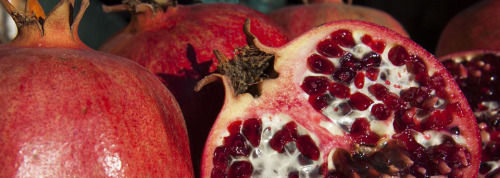a-gnosis:Here’s some more from Greek Myths and Mesopotamia: Parallels and Influence in the Homeric H
a-gnosis:Here’s some more from Greek Myths and Mesopotamia: Parallels and Influence in the Homeric Hymns and Hesiod by Charles Penglase (btw, I’m not saying that I always agree with his interpretations, but I think it’s an interesting read):One interpretation of the Homeric Hymn to Demeter is that it follows the concept of the initiation of a girl into female adulthood, specifically initiation by rape, in the sense of the violent sexual act. Penglase argues that this interpretation is not supported in the hymn or by the Mesopotamian stories, and that it misses the point of what is essentially a Greek religious work which has the purpose of celebrating the deities of Eleusis and the Eleusinian mystery cult in Attica.When Persephone is reunited with her mother she is presented as the same figure as before the abduction. Though Hades has given her powers over the netherworld and the upperworld, and she now clearly is his wife, she is not presented as the awful netherworld queen portrayed by Homer in the Iliad and the Odyssey, but as the child of the mother goddess Demeter. It is also clear that no violent sexual act is involved. When Persephone tells her mother about her abduction she makes no allusion to such, nor is her attitude to Hades hostile. The author of the hymn makes no allusion to any such thing, either.Actually, Penglase means that one possible interpretation of the scene when Hermes enters the presence of Hades and his wife sitting together in bed, is that the marriage has not been consummated:And he found that lord within his house,sitting in bed with his revered wife,much reluctant because of longing for her mother.“However, if the other interpretation is correct, that the tableau of the two sitting in bed is meant to indicate that they are now completely married, there is in this scene still no indication of the sadistic tyrant and rapist that one would expect in the light of some studies. Indeed, the evidence indicates quite the opposite of violence. While Hades is indeed masterful, the relaxed and even compassionate nature of his demeanour is emphasized especially by lines 357-69. In addition, Persephone is certainly no maltreated or hostile victim here. The picture presented is rather that of a homesick girl, reluctant certainly but, as stated in the text, for the simple reason that she longs to see her mother, from whom she has been separated without warning (line 344). This accords with the thematic basis of Persephone’s role in the hymn and is also in concert with the Mesopotamian origins of this cultic story of the lost child of the mother goddess in the netherworld, which seems to be the primary foundation stone of the whole work and is borne out in every passage which has to do with Persephone.”The pomegranate seed that Hades gives Persephone is, according to Penglase, probably meant as a love-charm to make her reciprocate his love and desire for her. -- source link
Tumblr Blog : a-gnosis.tumblr.com
#charles penglase#persephone#greek mythology

